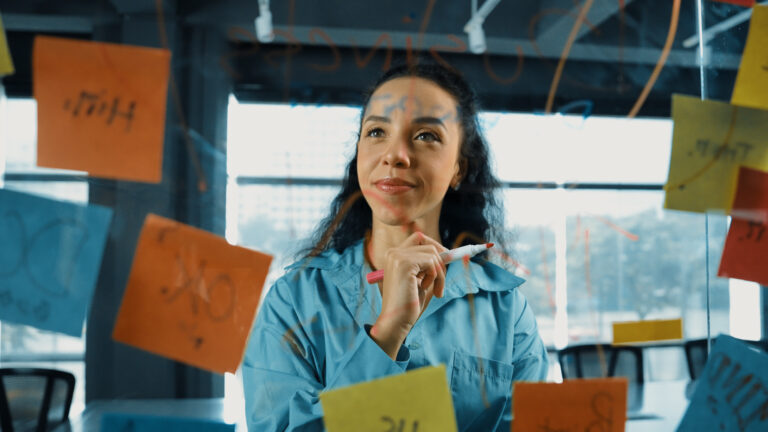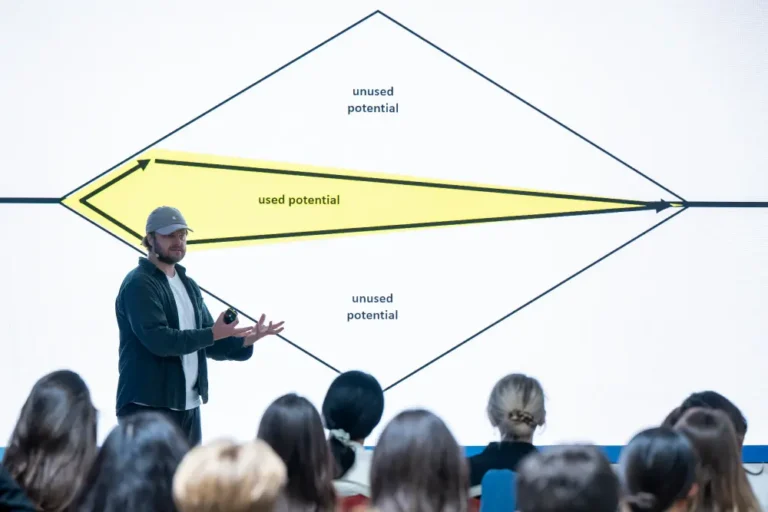Creativity is widely recognized as a key factor for business success. Whether it’s new products, innovative business models, or bold marketing campaigns – without fresh ideas, every organization eventually stagnates. And yet, as important as creativity is, it often gets lost in the daily reality of teamwork. Instead of bold suggestions, meetings are filled with silence. Instead of innovation, routine dominates. Many teams experience an invisible brake: creative blocks.
These blocks arise for many reasons. Some team members are afraid of embarrassing themselves. Others feel unheard. Still others are so caught up in operational stress that there’s no room left for creative thinking. Psychologists call this Creative Anxiety – the fear of being creative. Studies such as Daker, Cortes, Lyons, and Green (2019) show that when people feel pressured or fear being judged, they produce far fewer creative ideas.
But creative blocks are not an unavoidable fate. With the right conditions, teams can learn to overcome them and systematically foster creativity.
Why Creative Blocks Arise in Teams
There are many causes, but three factors are especially decisive:
1. Lack of psychological safety
When team members fear being criticized for unusual ideas, they stay quiet. The thought “Better say nothing than be laughed at” is one of the biggest killers of creativity.
2. One-sided perspectives
Many teams consist of similar profiles. As a result, ways of thinking are repeated rather than challenged, and new perspectives are missing. Diversity of backgrounds and experiences is often lacking.
3. Time and performance pressure
Constant deadlines make it difficult to access creative thinking. Creativity requires breathing room – and many organizations don’t consciously make space for it.
How Teams Can Overcome Blocks
Some blocks can’t be solved with quick fixes but require a shared, structured approach. That’s why we developed Discovery X – an intensive program that supports teams over several months and guides them step by step toward breakthroughs. For organizations seeking long-term support, the Creativity Lab also offers a Membership, which brings us in as ongoing sparring partners and creativity advisors alongside your team.
Research and practice provide a number of strategies to get teams back into creative flow:
Foster psychological safety
Amy Edmondson, one of the leading researchers in this field, shows that only teams who can openly discuss mistakes and unusual ideas are truly innovative. Leaders play a decisive role here by showing vulnerability themselves (“I don’t know either, let’s figure it out together…”) and by actively signaling appreciation.
Build in diversity
Teams benefit enormously from heterogeneous backgrounds. Studies show that interdisciplinary groups consistently find more creative solutions. An engineer, a designer, and a marketing expert bring different perspectives that enrich one another.
Use structures
Many assume creativity is pure chaos. But structured methods such as Design Thinking or Creative Sprints help teams develop ideas systematically. These frameworks reduce anxiety because they make the process more predictable.
Develop rituals for creativity
Teams that regularly practice small creative exercises lower their threshold for participation. A short “What if?” game at the start of a meeting or a collective brainstorm on sticky notes can already help loosen blocks.
Release the pressure
Creative performance doesn’t emerge on command. It helps to create phases where no evaluation takes place. For example, a brainstorming session where the rule is: “Quantity before quality.” Only afterward are ideas assessed.
A Real-Life Example
A mid-sized technology company in Germany faced the problem that the same people spoke up in every meeting while creative suggestions were missing. The solution: the team introduced a rule that the youngest employees had to present their ideas first before managers could speak. This surfaced new voices that had previously gone unheard. At the same time, they introduced a “Worst Idea Session,” where the most absurd suggestions were collected on purpose. The outcome: more lightness, more courage, and more innovation.
The Role of the Five Creativity Types
The five creativity types we describe – Sensemaker, Cultivator, Imaginator, Unboxer, and Observer – show that blocks aren’t overcome by simply adding more ideas. Instead, different behaviors are needed:
- Cultivators strengthen trust in the team.
- Sensemakers bring order to chaotic discussions.
- Imaginators spark inspiration with images and visions.
- Unboxers break old patterns.
- Observers contribute valuable insights through their fine perception.
Teams that learn to deliberately apply these types and their Creative Behaviors systematically dismantle creative blocks.
Conclusion
Creative blocks are normal – but they are not permanent. They arise from fear, routine, and pressure but can be resolved through safety, diversity, structure, and rituals. The key is for teams to understand: creativity is not an accident, but a behavior that can be practiced.
Research shows that every team can become more creative when the right conditions are in place. By reducing Creative Anxiety and integrating the strengths of different creativity types, teams open the door to ideas that truly break new ground.

